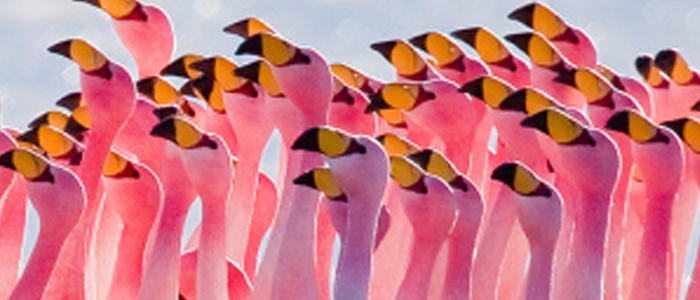New to science: November 2013
Posted on November 6, 2013 by Benjamin Thompson
Each month, the Society for General Microbiology publishes the International Journal of Systematic and Evolutionary Microbiology, which details newly discovered species of bacteria, fungi and protists. Here are a few of the new species that have been discovered, and the places they’ve been found. The full papers are available to journal subscribers, but the abstracts are free to read.
In the few short months that we’ve been posting New to science, I’ve been constantly surprised by the places that researchers have found new microbes. This month, I think we might have hit the zenith. Nothing can top this. Researchers in Switzerland have discovered the new species Arsenicicoccus dermatophilus growing in the foot lesions on juvenile flamingos’ feet. It turns out that pododermatitis – inflammation of the feet – is a common problem for birds kept in captivity, like the flamingos in this study, who were living in a Swiss zoo.

In that’s-a-much-more-normal-place-to-search-for-microbes news, researchers from Bulgaria have discovered Myroides guanonis living in prehistoric guano paintings found in the Magura Cave in the northwest of the country. Also, this month a Korean researcher has identified Humibacter antri, isolated from clay soil samples taken from a cave in Jeju, South Korea.
Halomonas zincidurans and I have an interesting similarity: we are both heavy-metal-tolerant. That said, this tolerance manifests itself in very different ways. While I can stand literally minutes of Iron Maiden, this newly discovered species can grow in liquid containing high concentrations of metals such as copper, cobalt or zinc (hence its name). H. zinciduranswas isolated from deep-sea sediment collected from the South Atlantic Mid-Ocean Ridge. To my knowledge, the microbe’s ability to grow while being subjected to lengthy periods of Metallica remains untested.
Finally, it wouldn’t be a proper edition of New to Science if we didn’t include at least one new species isolated from a food preserved in brine. Thankfully, researchers from the Northeast Agricultural University in China have come up trumps for us, isolating Lactobacillus heilongjiangensis from ‘traditional pickle’ made in the Heilongjiang Province of the country.
These are just a few of the new species described this month; you can see the full list at IJSEM. We’ll be back again next month with a host of new ones; look out for us then!

